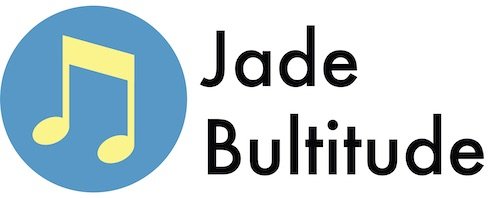The E flat Minor scale is a 7 note scale that uses the following notes:
Eb, F, Gb, Ab, Bb, Cb and Db.

The scale is usually written as starting and ending on E flat and it can be repeating at higher or lower octaves. E flat Minor is a diatonic scale, which means that it is in a key, in this case the key of Eb Minor!
The Natural Minor Scale
There are three types of minor scale: the natural minor, harmonic minor and melodic minor. In this post we will stick to Eb Natural Minor Scale, but you learn about Eb Harmonic Minor and Eb Melodic Minor in our other articles.
How is the E flat Natural Minor scale created?
All Natural Minor scales follow a specific pattern of tones and semitones (steps and half steps). The tone pattern is:
Tone, Semitone, Tone, Tone, Semitone, Tone, Tone
If we take the start at a C and follow the pattern we will get the C Natural Minor Scale. To create the Eb Natural Minor scale, follow the tone/semitone pattern starting on the note Eb.
Whichever note you start on, you will always achieve the minor scale starting on this note.

E Flat Minor Scale on the Piano
As you can see, if we were to play this scale on the piano diagram we will use five black keys for five of the flats. The sixth flat, Cb, is the enharmonic equivalent of B natural and so is played with a white key.
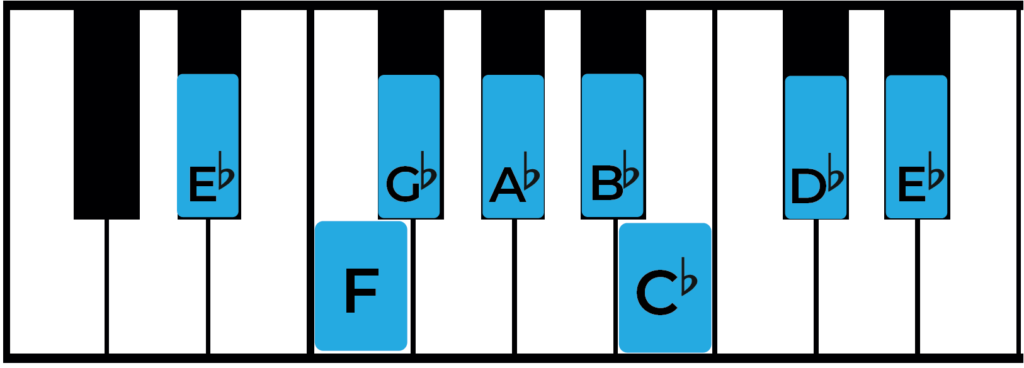
To play this scale on the piano use the fingers written below.
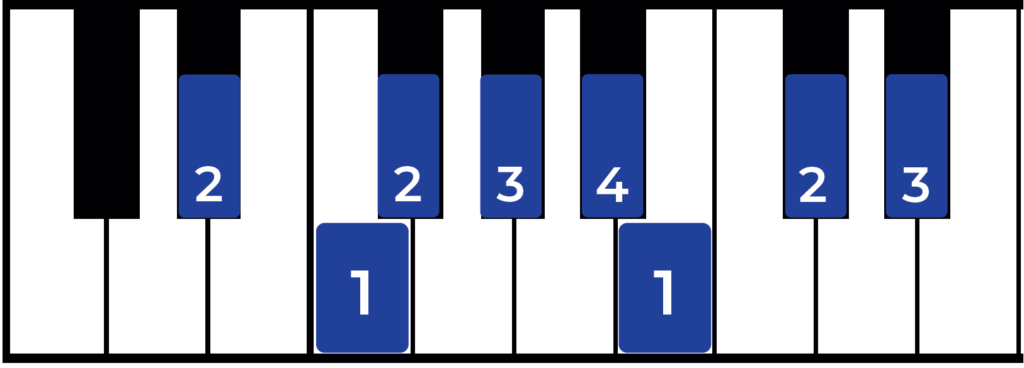
E flat Minor Scale on the Guitar
To play the Eb Natural Minor scale on the guitar use the tab below.
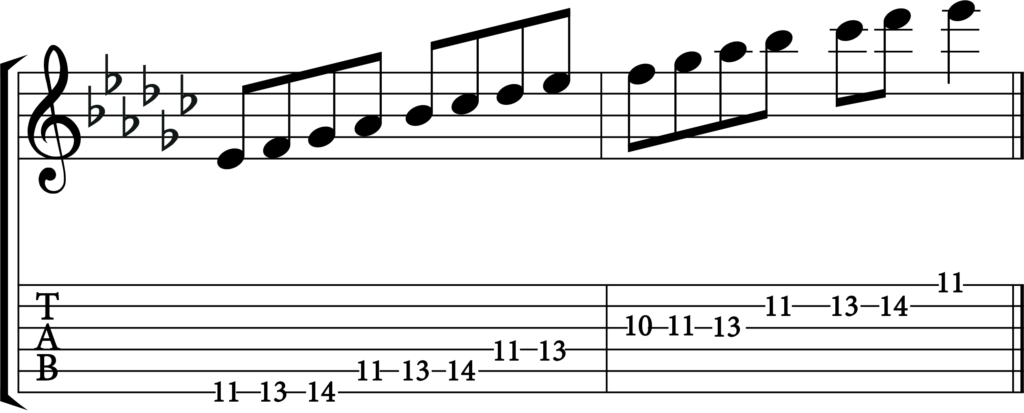
Degrees of the Scale: E Flat Minor
Each note in the E flat Minor scale has a position that we call the degree of the scale. The first note of the scale is called the ‘tonic’ note.

Key Signature for E flat Minor
Rather than writing the flat signs on the individual notes, we can now make use of the key signature. E Flat Minor is the relative minor of G flat Major. You can work this out because Eb is the sixth note of G flat Major.
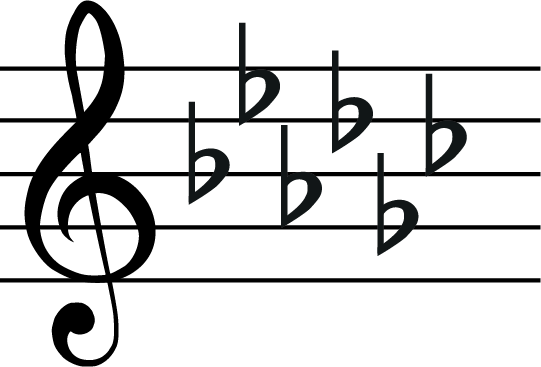
Here is the scale written out in the treble clef with the key signature.

E flat Minor Scale in Different Clefs
Treble Clef
Below is the E flat Natural Minor Scale written out in the treble clef, both ascending and descending.

Bass Clef
Below is the E flat Natural Minor Scale written out in the bass clef, both ascending and descending.

Alto Clef
Below is the E flat Natural Minor Scale written out in the alto clef, both ascending and descending.

Tenor Clef
Below is the E flat Natural Minor Scale written out in the tenor clef, both ascending and descending.

What is the Relative Major of E Flat Minor
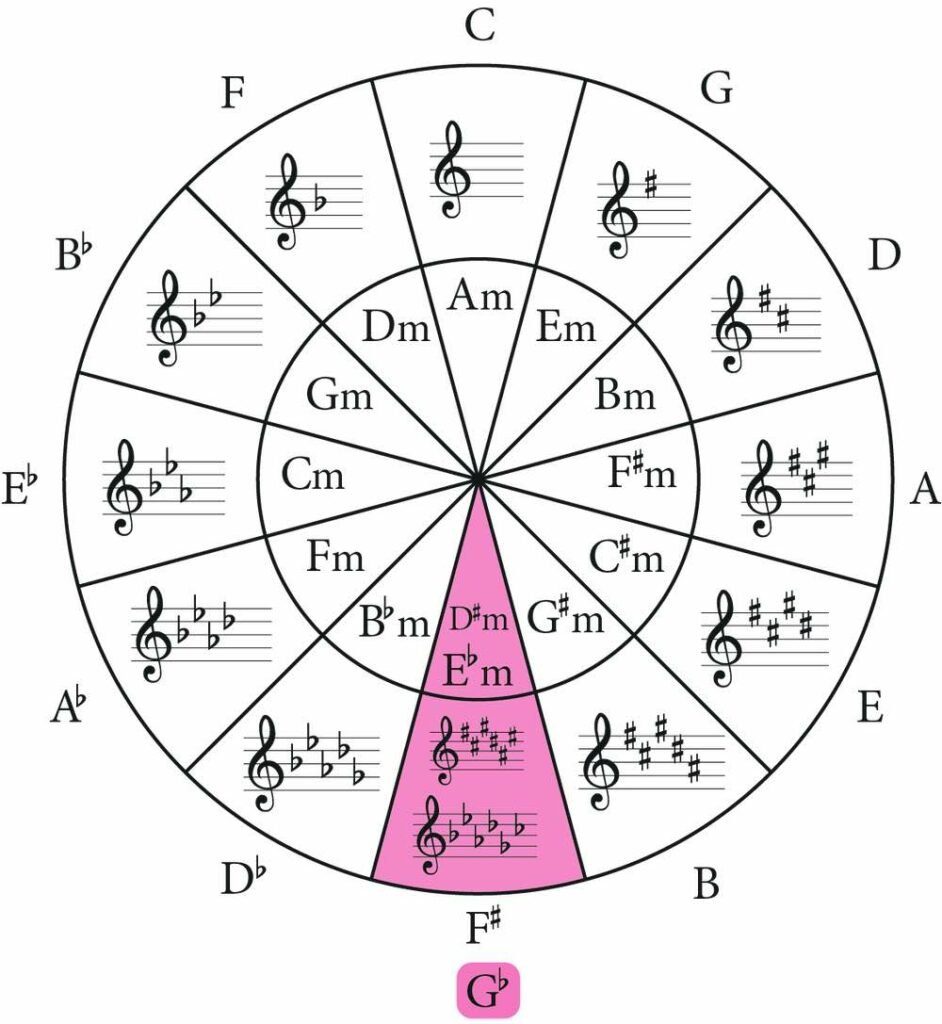
As you can see from the circle of fifths diagram Eb Minor is the relative minor of Gb Major. Or to say it another way: Gb Major is the relative major of Eb Minor. This means that Gb Major and Eb Minor share the same key signature and have six sharps.
The great thing about this is that both scales share a key signature and have six flats: Bb, Eb, Ab, Db, Gb and Cb.
What are the chords in the E Flat Minor scale?
There are chords starting on each note of the E flat Minor Scale. To learn more, see our dedicated post on E flat Minor Chords.
Enharmonic Equivalent Scales
Eb Minor and D# Minor are enharmonic equivalent scales. This means that they share all the same notes, but just written using enharmonic equivalent notes. You can see this below in the image of both scales.
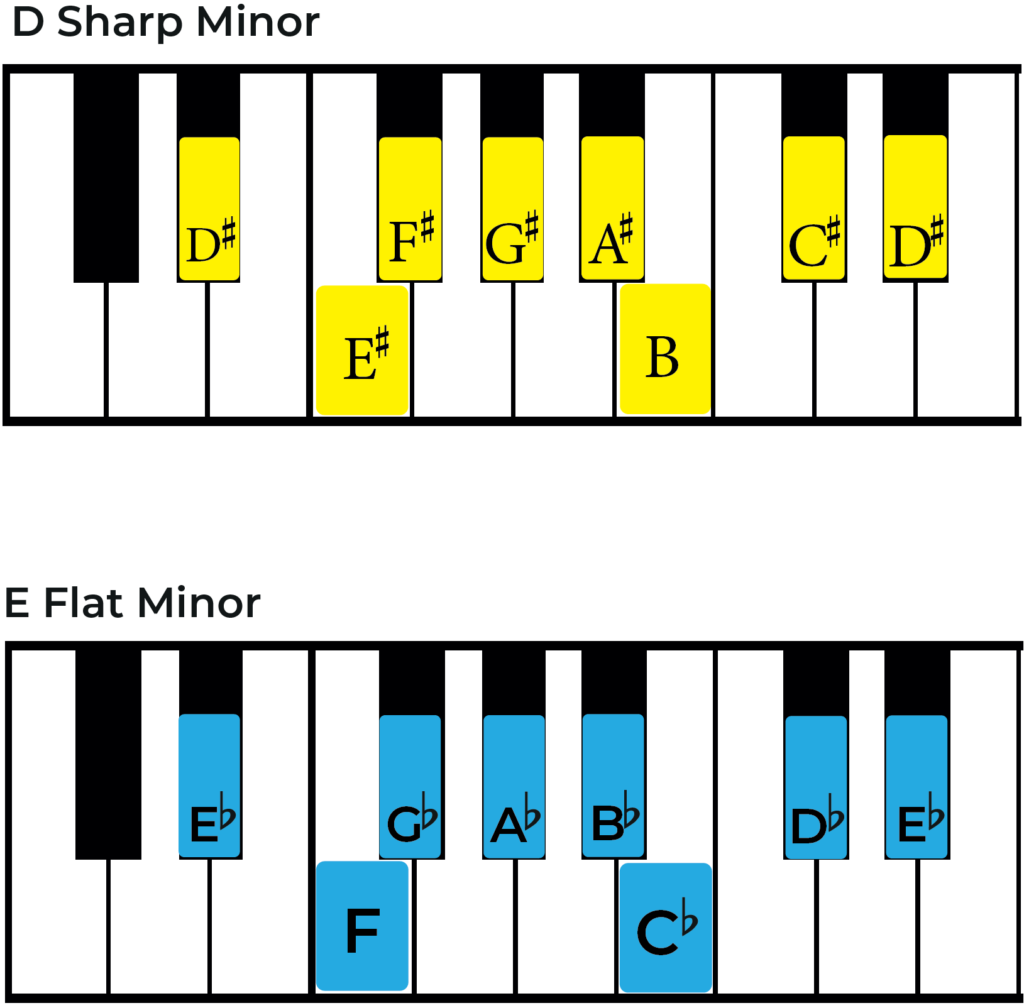
For example, the note F sharp is in D# Minor and the note G flat is in Eb Minor. Both these notes are enharmonic equivalents, meaning they sound the same. Learn more about the D sharp Natural Minor Scale here.
What do we mean when we say a piece is ‘in the key of E Flat Minor’?
If we say that a piece of music is in the key of E flat Minor, this means a few things:
- The key signature will have six flats and the relative major is Gb major.
- The tonic (or root note) of the piece will be E flat. This note will sound the most stable in the whole piece.
- The piece will mostly use notes from this scale, these could be in any octave.
- The chords used will be those chords that are in Eb Minor.
What’s next….
- Learn more about the different types of minor scales with our complete guide.
- Learn about the circle of fifths and how it can help you better understand music theory.
